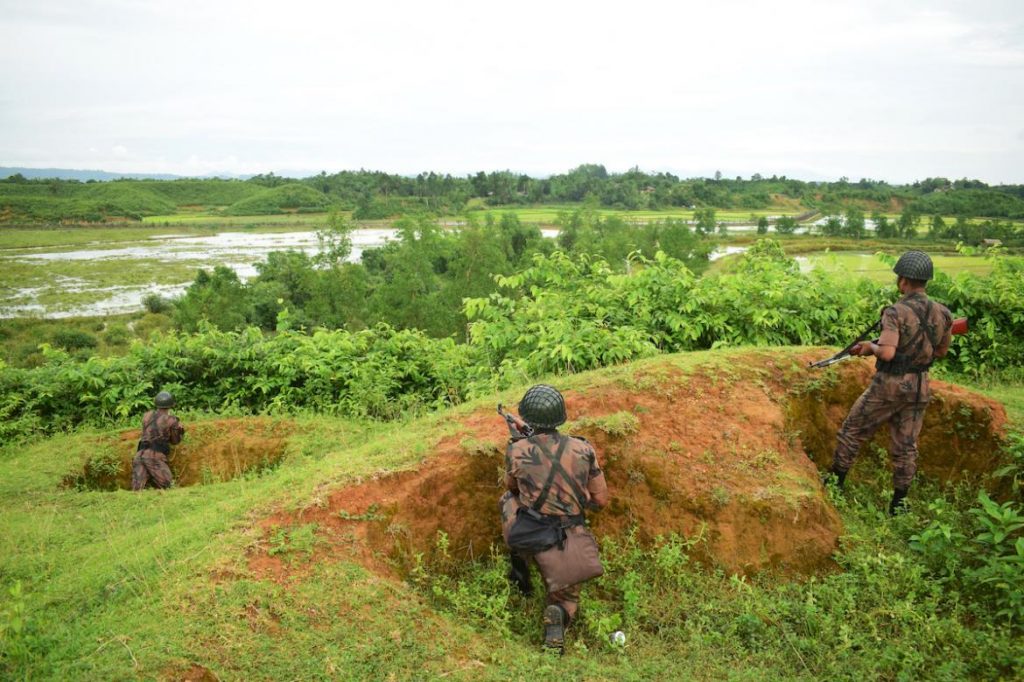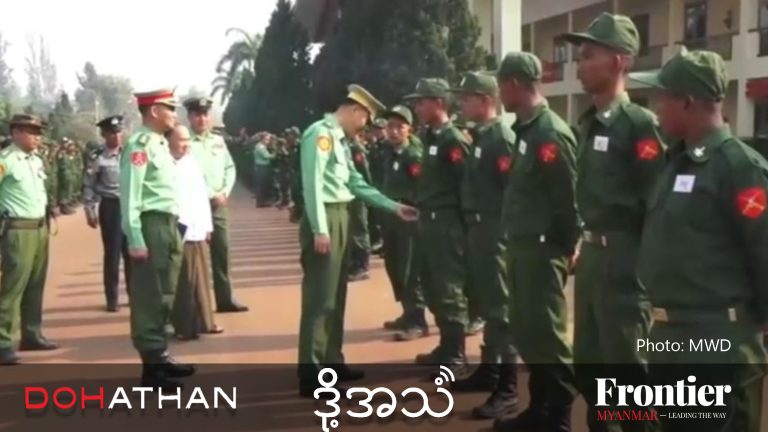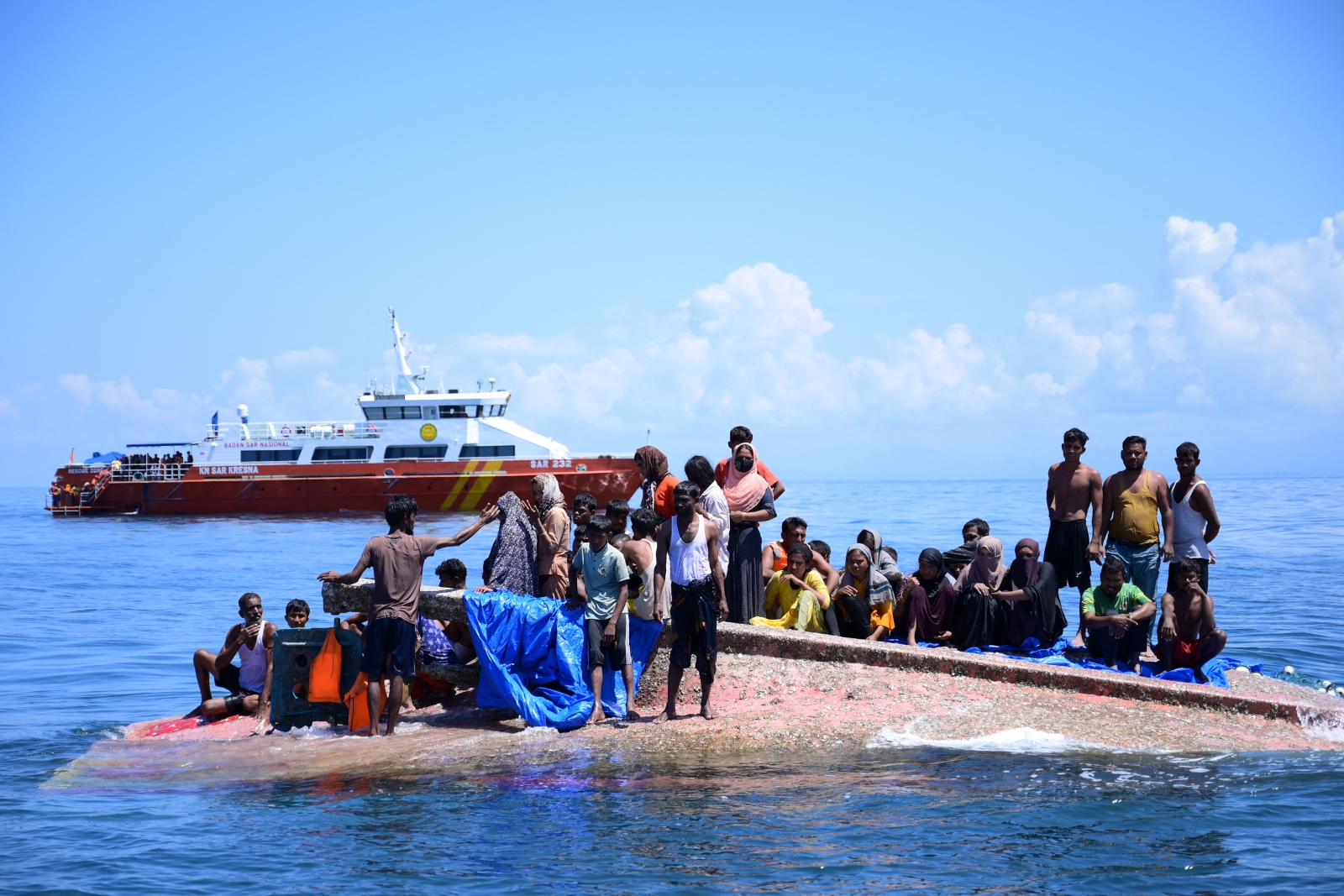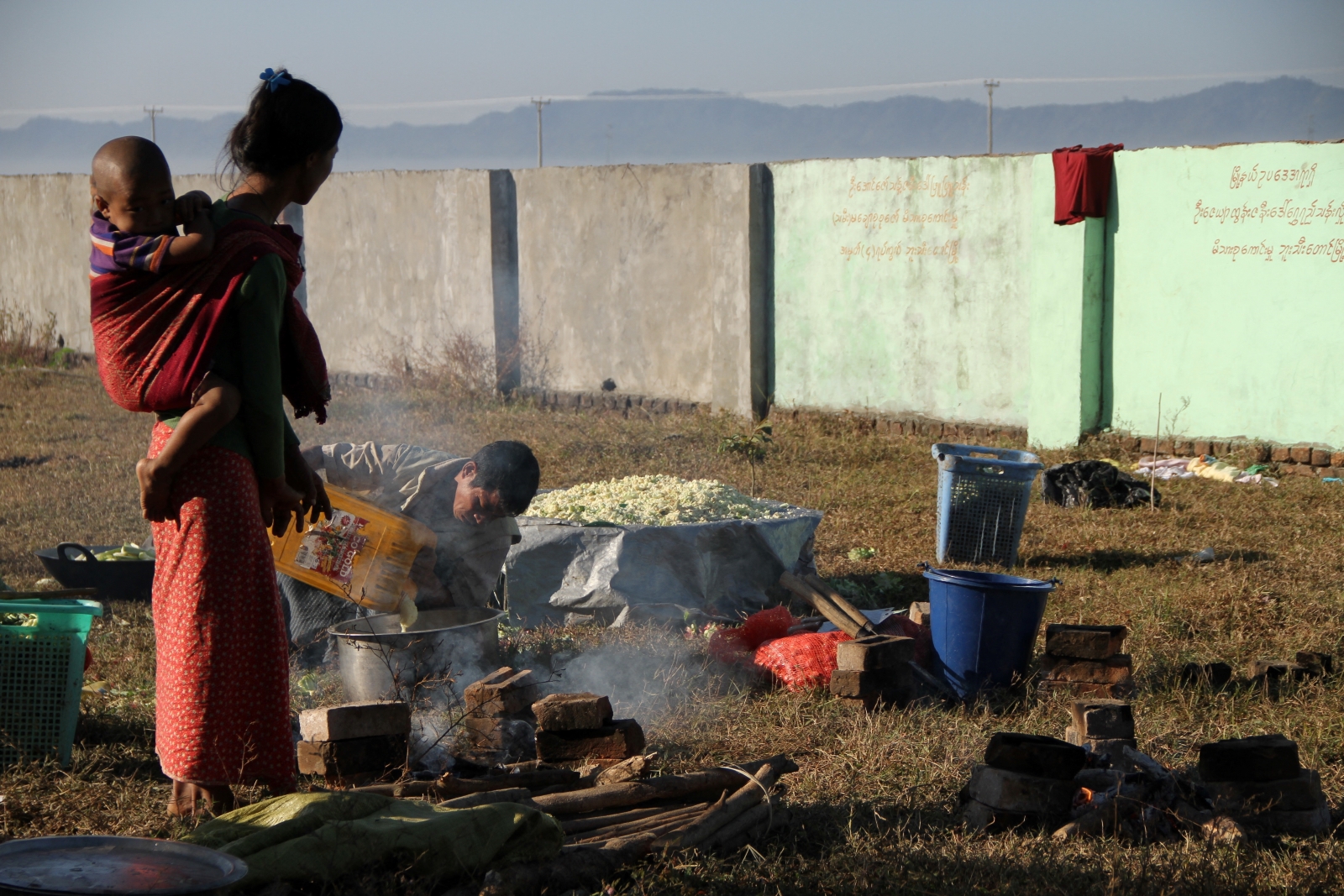By AFP
COX’S BAZAR, Bangladesh — Bangladesh detained and forcibly returned 70 Rohingya migrants to Myanmar, police said Sunday, just hours after Myanmar troops on the other side of the border reportedly opened fire on people fleeing the country.
Police intercepted them late Saturday after they crossed the “zero line” border zone, where Myanmar soldiers earlier fired mortars and machine guns at villagers making the dangerous dash from the northern state of Rakhine into Bangladesh.
The villagers were caught roughly four kilometres inside Bangladeshi territory en route to a refugee camp in Kutupalong, where thousands of Rohingya already live in squalid conditions, said local police chief Abul Khaer.
“All 70 were detained and later pushed back to Myanmar by the border guards,” Khaer told AFP.
Support more independent journalism like this. Sign up to be a Frontier member.
Police said some of those detained had entered Bangladesh via the Ghumdhum border area — where the Myanmar forces unleashed the barrage of fire just hours earlier.
“They were pleading with us not to send them back to Myanmar,” said one policeman on condition of anonymity.
The latest violence erupted early on Friday as scores of men purportedly from the Arakan Rohingya Salvation Army ambushed Myanmar police posts.
Using knives, some guns and homemade explosives they killed at least a dozen security force members.
Remote villages along the border between Bangladesh and Myanmar have seen fierce fighting since then between suspected militants and Myanmar security forces.
The violence has left a total of more than 100 dead since Friday and forced thousands of Rohingya to flee towards Bangladesh.
But authorities there have refused to let most of them in, with thousands of people — mainly women and children — stranded along the border zone.
The Bangladeshi government has instructed local officials in Cox’s Bazar, the district bordering Myanmar that is home to several large refugee camps, not to allow any “illegal entry” by Rohingya, Abdur Rahman, a senior government official, told AFP.
The impoverished country already hosts some 400,000 Rohingya refugees.
But Rohingya community leaders, local media and an AFP correspondent said despite heavy border patrols, at least 3,000 Rohingya refugees have managed to enter the country and found refuge in camps and villages since Friday.
In Rakhine itself six members of an ethnic Mro family have become the latest victims of the violence. Their bullet-riddled bodies — including three children and a woman — were discovered on Sunday and brought to a hospital in Maungdaw, the main town in northern Rakhine.
The victims had allegedly been shot dead by Rohingya militants on Saturday evening as they tried to flee to Maungdaw, a relative who lived in the town told AFP.
“We were still in contact with them yesterday by phone before they were killed. Now their dead bodies are in this hospital,” the distraught man told an AFP reporter.
The office of State Counsellor Daw Aung San Suu Kyi posted pictures of some of the victims on its Facebook account, saying two women and four children survived the ambush and alerted authorities.







